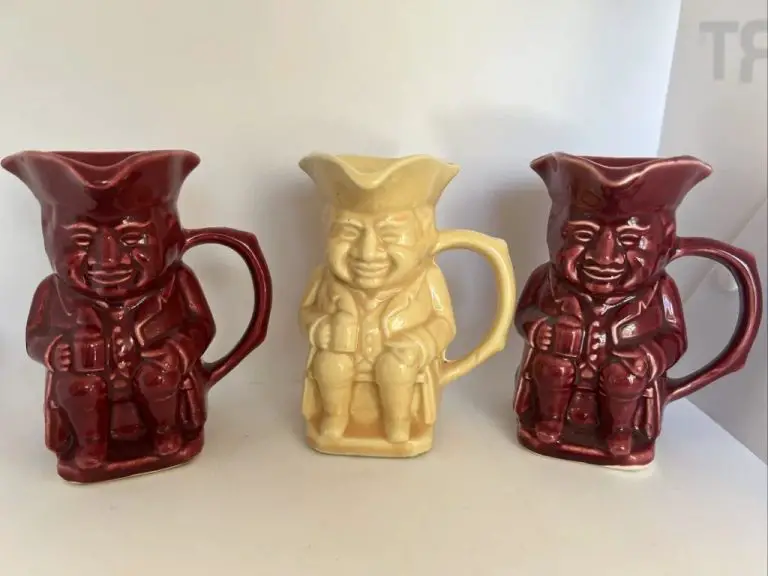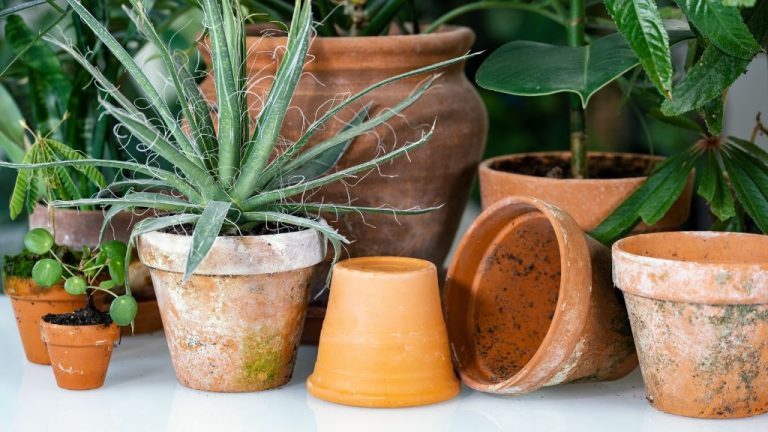Which Soil Is Needed For Making Durga Idol?
Durga Puja is the most important and popular festival celebrated in India, especially in West Bengal and other parts of East and North East India. It is celebrated every year in the month of Ashwin (September-October), marking the victory of good over evil.
The festival celebrates Goddess Durga and her triumph over the buffalo demon Mahishasura after a long battle. It symbolizes the triumph of good over evil and it is believed that Goddess Durga makes her annual visit to earth during this time.
Thus, Durga Puja is celebrated with grandeur and the making of idols of Goddess Durga and worshipping them is an integral part of the Puja celebrations. The idols are crafted out of clay and painted beautifully to invoke the blessings of Maa Durga.
Different Types of Clay
There are several different types of clay that are commonly used to create Durga idols and other religious sculptures in India. The main types are:
River Clay: This natural clay is gathered from river beds and river banks. River clay has good plasticity and stretching capacity, which makes it ideal for sculpting detailed and expressive idols. River clay ranges in color from grey to red.
Terracotta Clay: Terracotta is a type of baked clay. It can be naturally occurring or produced by firing a clay mixture at high temperatures. Terracotta clay can be glazed or left unglazed. It has a distinct orange/red color.
Polymer Clay: Polymer clay is a man-made modeling compound. It is made from polyvinyl chloride mixed with colorants and plasticizers. Polymer clay is lightweight, easy to sculpt, and doesn’t require firing. It’s a popular choice for small idols and decorative pieces.
Properties of Clay for Idol Making
The most important properties to consider when selecting clay for idol making are plasticity, strength, color, and ability to hold shape.
Plasticity refers to the clay’s ability to be molded and shaped without cracking or crumbling. More plastic clays are easier to work with and sculpt intricate details. Plasticity is affected by the clay’s composition and water content.
Strength relates to how durable the finished idol will be. Clay that is too weak may crumble or break easily during sculpting or once baked/fired. Stronger clays hold their shape better without compromising plasticity.
Color is both an aesthetic concern and indicates the clay’s composition. Natural clay deposits come in various hues like grey, red, yellow. The color affects the look of the finished idol. White clay is often preferred as it takes paint well.
The ability to hold shape refers to how well the clay sculpture retains its form from wet to baked/fired states. Some clays may slump or warp when dried if they lack sufficient strength. Ideal clays keep their sculpted shape during all stages.
Balancing these factors allows choosing a clay that is pliable for sculpting, stable during drying/firing, attractive when painted, and preserves the intricate details of the idol.
River Clay
River clay is a type of natural clay found deposit near the banks of rivers. It has a smooth and fine texture that gives life-like look and color to Durga idols. The natural grey and brownish tones of river clay help craft idols that reflect the earthy aesthetics of the traditional Durga puja celebrations.
Artisans prefer river clay for making Durga murtis because of its flexibility, durability, and natural coarseness. Its soft and malleable texture allows artisans to hand-sculpt intricate details into the idol’s features and adornments. The coarse natural grains act as strong binding agents that give structural strength to the idol to withstand transportation and avoid breakage.
The composition of river clay contains natural minerals, vegetal debris, and sediments that lend it the earthy grey-brown tones. When carved into the deity murtis, these colors give them a natural and traditional look, typical of how Durga idols appeared in early puja celebrations. The lack of artificial pigments allows the river clay idols to embody the primordial and unrefined spirit of the Goddess Durga.
Terracotta Clay
Terracotta clay is made from baking earth or clay at high temperatures. This process causes the clay to harden and obtain a reddish-orange color known as terra cotta, which means “baked earth” in Italian. The high firing temperature makes terracotta clay very durable and water-resistant.
Terracotta contains a high amount of iron oxide, which gives it the distinctive reddish hue. The clay’s iron content and porous nature also allows it to absorb and hold some water, which can help regulate humidity. However, it’s less malleable and flexible than other clays when wet.
The porosity of terracotta makes it suitable for plant pots and water filters. Its hardness also makes it ideal for sculpture, tiles, and decorative objects. The reddish tone and texture of terracotta clay lend an earthy, rustic look well-suited for arts, crafts, and idol-making.
Polymer Clay
Polymer clay is a modern synthetic modeling material that has become popular for making idols and figurines. It consists of polyvinyl chloride (PVC), plasticizers, and pigments that allow it to be shaped when heated. Once cooled, it hardens permanently.
Polymer clay offers several advantages for idol making:
- It can capture very fine details, allowing artisans to create intricate and elaborate designs.
- It doesn’t dry out or become brittle like natural clays, so figures made from polymer clay remain flexible and durable.
- It doesn’t require firing in a kiln, making the process cleaner and easier.
- A wide variety of colors are available, removing the need for painting.
- There is no need to premix large quantities, reducing mess and waste.
The smooth texture and molding ability of polymer clay makes it ideal for achieving the delicate features on idols. However, purists still prefer natural clays for their traditional properties and artisanal origins.
Preparing the Clay
Properly preparing the clay is one of the most important steps in creating a Durga idol. Here are the key steps involved:
Soaking – The clay needs to be thoroughly soaked in water before use. This allows the clay to become soft and pliable. The soaking time can range from several hours to overnight depending on the type and quality of clay.
Kneading – After soaking, the clay needs to be kneaded using hands or feet to achieve a uniform consistency. Kneading removes air pockets and allows any lumps to be worked out. The clay should be kneaded until it reaches the desired smoothness and elasticity.
Aging – For best results, clay can be allowed to age after kneading. This resting period allows the moisture to distribute evenly throughout the clay. Aging for 1-2 days is common. Keep the clay wrapped in plastic to prevent drying out.
Removing Impurities – Any pebbles, grit or debris should be removed from the clay at this stage by hand. It’s important to get rid of anything that could scratch or damage the finished idol surface.
The prepared clay is now ready for sculpting and shaping the Durga idol. Proper clay preparation ensures the clay has the right consistency and is free of defects.
Shaping and Sculpting
Shaping and sculpting the clay is one of the most important parts of creating a Durga idol. Artisans use various tools and techniques to sculpt the fine details and bring the idol to life.
Potter’s wheels may be used to shape basic forms, while wooden sculpting sticks help add finer details. Loop tools made of metal rods bent into curves at the ends are ideal for making lines and adding texture. Flat metal tools like ribs and kidneys are used to smooth and shape surfaces.
Clay shaping knives help cut excess clay and carve out details. Needle tools create holes, lines and textures. Sponges can be used to create porous textures. Fingertips are also commonly used to shape, blend and sculpt the clay.
It takes great skill, practice and artistic vision to properly sculpt the minute details like facial features, limbs, clothing, jewelry and additions like the demon Mahishasur under Durga’s feet. The clay must be kept moist during the sculpting process to avoid cracking and breaking.
Painting and Finishing
Once the sculpture has taken shape, it is time for paint and ornamentation to breathe life into the idol. This is when the figure transforms from dull clay into a vibrant and colorful deity. Artists use acrylic or poster paints to add color to the sculpture. They start with a base coat, usually a lighter shade, covering the entire idol. Next, they add darker hues for dimension and depth. Finer details like facial features, jewelry, clothes and textures are also painted intricately.
Gold and silver leaves may be applied for accents along with glitter and semi-precious stones. Tiny mirrors are also attached in places for added sparkle and shine. Fabric, fibers or paper can be used to sculpt clothes, drapes, flowers and other creative details. The idol is usually adorned with metal jewelry and ornaments for the final finishing touches. Artisans may use their own unique style, but always aim to bring out the divine qualities of the deity through the colors, textures and ornaments. The painting and finishing transforms a sculpture into an ornate masterpiece ready for worship and veneration.
Environmental Considerations
The making of Durga idols can have some concerning environmental impacts that should be considered. Here are a few of the main issues:
River Pollution
The remains of idols made from clay are often immersed in rivers as part of the ritual. However, the paint and other materials can contaminate the water. Lead-based paints are especially problematic. Advocates have called for more environmentally friendly practices, like using natural colors and biodegradable materials.
Lead Paint
Lead-based paints have traditionally been used to decorate Durga idols. Lead is a toxic heavy metal and exposure can cause health problems, especially in children. There’s been a push to switch to safer water-based paints instead.
Disposal
Proper disposal of idol remains is important. Composting the clay portions is one eco-friendly option. The paints and ornamentation also need to be disposed of responsibly instead of simply dumping them into waterways or landfills where they can leach toxins.
Making Durga idols more sustainably reduces their environmental impact. Simple changes like using clay free of lead and other toxins, biodegradable paints, and responsible disposal practices can make a big difference.




